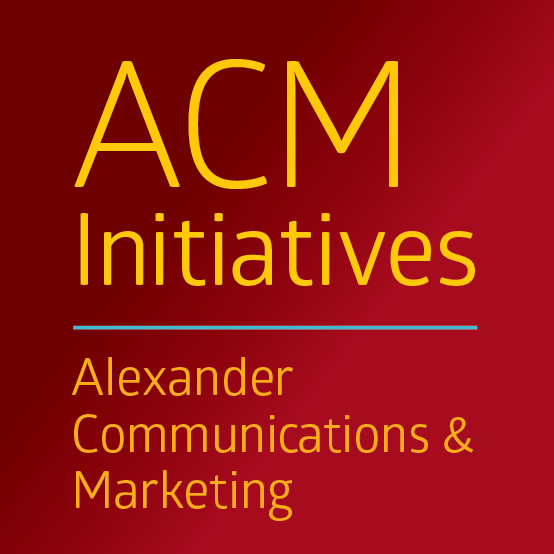Take These 7 Steps First to Power Up Your Digital Marketing Strategy
Video Transcript
Just running a small business is hard enough—right? But what about your marketing? Is your head spinning with all the things it takes to really be effective online? Are you overwhelmed with the work it’ll probably take? So, you throw up your hands, just stay put with your website and a nearly dormant Facebook page, and call it good? What are you getting from it? Almost nothing—right?
Well, if that’s the case, stay with me, because we’re going to walk through seven steps to get your small business online marketing tuned up, in short order.
Hi, I’m Perry Alexander, and today, I’m going to share with you my seven basic online marketing strategy tips.
Sometimes, new marketers can get ahead of themselves—tempted to jump into advanced tactics, without building a good foundation and full understanding of how things mesh together for a sound digital marketing strategy.
So, tell me, are you getting all you want from just having a website and maybe a Facebook page? If you are, leave a comment that says, “yes.” If not, leave a comment that says “no,” so I can focus my future videos to help get where you want to go.
Before you do anything else, give a lot of thought and get crystal clear, in your own mind, about all the things that set you apart from everybody else. And, then, distill that down to a few sentences that just roll off your tongue at a moment’s notice. This is your Unique Value Proposition, or UVP—and it’s fundamental. It’s your “elevator” speech. Without getting your UVP down pat, the chances are that your messaging won’t be consistent or powerful.
When you’ve built a list of customers and contacts, find out what they want from you—what they like and what they’d like to see improved. Use a free tool like SurveyMonkey to ask them a few questions. Have them rate your product offerings and customer service, and maybe the website itself. This can really help to refine your UVP, I mentioned earlier.
You have to prioritize your digital marketing goals. What do you want more of? Leads. Inquiries. Name recognition. Online sales. Profitability. Overall revenue.
If it’s more leads, for instance: add a pop-up form to your website to offer something free in exchange for an email address. HelloBar and others have free tools for that. There’s a link posted below. Prominently link from your website to your YouTube channel and your latest social media post, and ask for likes, follows, shares, and comments. The simple act of asking raises your chances of getting them. If your goal is to get more online sales, take a hard look at your site’s shopping experience. Is it a chore to navigate? Confusing? Are descriptions complete? Is your check-out process a hassle? How about delivery times, after-sale follow-up, and customer service? You might even consider partnering with Amazon, Etsy, or other online retail portal, depending on what you’re selling. Each goal requires its own tactic.Leverage your website and social media. If your last Facebook post was three years—or even a month ago, you need new content! Add fresh, new material through blog and social media posts—once a week, if you can manage it. And when you research keywords that people are using to find you, make sure those words and phrases are included in your posts and headlines. Neil Patel’s UberSuggest is a great, free SEO keyword research tool. The link’s posted below. And, to analyze how your own site content is doing, be sure to connect the free SEO Google tools to your site, called Google Analytics and Google Search Console.
Make sure your blog and social media posts are centered on useful information about the topics you know inside and out, and go very light on the sales message—but do include a call to action—like asking people to subscribe, comment, or share your post, offering something free in exchange for their email address. You’ll build trust and authority with a steady diet of actionable, free content, and people will naturally gravitate back for more, and eventually want to contact you about hiring your services or buying you product.
Make videos. Do a short home page video, with a brief welcome message, maybe share your business philosophy, and mention a few things they shouldn’t miss on your site. It shows your personality and how you do business. It builds trust, and people will stay on your site longer. Launch a separate and ongoing series of helpful videos on your area of expertise, and create a YouTube channel, which is so important to building your audience and your Google search ranking. And, they don’t have to be highly polished. Again, go heavy on information about the topic, and ease off on the selling. And, as always, optimize it with keywords. And, if you include a transcript of the video, Google can search it and help your rankings.
Get started and stick to it. Digital marketing hard costs don’t have to be big to produce great results, but you have to put the work in, and you can’t let up. But, sometimes the toughest part is to just get started! Your out-of-pocket is almost nothing, but you’ve got to devote time and effort—or find an expert to set things up and help you keep up the pace.
While these seven ideas are a solid start, there are plenty of other ways to power up your digital marketing strategy even more. So, if this all sounds inspiring, but feels a little daunting—or maybe a lot—check out my digital marketing company website and let’s talk about how we might work to get you on the right track and lighten your load.
What digital marketing technique is working best for you? Leave a comment below, and let’s talk.
Resources and Links
HelloBar http://hellobar.com/
UberSuggest https://neilpatel.com/ubersuggest/
Google Analytics https://analytics.google.com
Google Search Console https://search.google.com/search-console/about
Survey Monkey https://www.surveymonkey.com/


